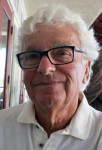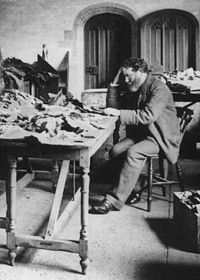By Joe Spier


CALGARY, Alberta, Canada— It is a short hour and a half plane ride by EL Al from Tel Aviv to Cairo as we, four Calgarians, in the year 2010, leave the Israel part of our trip and embark upon our Egyptian adventure. To sail down the Nile, the longest river in the world and to explore the splendors of ancient Egypt; the mighty pyramids of Giza, the mythical Great Sphinx, the amazing Temples of Karnak and of Abu Simbel, the gigantic statues of the Collosi of Memnon, the enormous Unfinished Obelisk, the tombs of the Pharaohs in the Valley of the Kings, the burial treasures of Tut ankh Amun.
But first we visit the Ben Ezra Synagogue in Old Cairo. The Ben Ezra Synagogue, the oldest standing in Egypt, was originally a Christian church that the Coptic Christians of Cairo were forced to sell in order to pay annual taxes imposed by the Muslim rulers of the 9th century. Rabbi Abraham Ben Ezra of Jerusalem purchased the church in 882 AD for 20,000 dinars and converted it into a synagogue. Lore has it that the synagogue lies on the spot where Pharaoh’s daughter found the baby Moses hidden in the reeds on the banks of the Nile which at that time flowed up behind the Ben Ezra. In the basement of the synagogue there is a vault filled with water that is believed to be from the banks of the Nile during the time of Moses. Because of the spiritual significance of the synagogue, Jews came from all over the Middle East to sleep in its rooms asking Rabbi Ben Ezra for help in their plight and offering pledges to the synagogue as a token of thanks. Moses Maimonides, the Rambam, one of the greatest Torah scholars of the Middle Ages worshiped there when he lived in Cairo. Numerous restorations and renovations have been made to the Ben Ezra over the centuries, with the last in 1892 when the building was reconstructed to the original.
The Ben Ezra Synagogue is reached by traversing a maze of alleys, its non-descript exterior belying what lies within, the only clue being a mezuzah tacked to its entrance way and a metal plaque proclaiming “Ben Ezra Synagogue – Property Of The Jewish Community Cairo.” Entering the synagogue past the tight Egyptian police security, we are immediately awed by the beauty of the interior, the marble columns, floor and steps leading to the “Aron Kodesh” which is made of polished wood inlaid with mother-of-pearl. In the middle of the sanctuary lies a marble “bimah” from which the Torah was read. An Oriental wooden railing surrounds the women’s upper gallery.
However, that is not what really interests me. I seek a sealed hole that once housed a secret chamber. I spot it, high in the synagogue wall above the women’s balcony that overlooks the main floor and can only be reached by a ladder. There, in that dark space now empty was once the greatest repository of Jewish medieval and ancient documents found anywhere in the world, the Cairo Geniza.
A geniza (Hebrew for “hiding place”) is a special storage space in a synagogue. In it were kept worn-out, damaged or to be discarded books and papers as well as heretical or disgraced Hebrew writings and biblical material that contained scribal errors, all of which were deposited before receiving a proper cemetery burial as it was forbidden to throw away writings containing the name of God. The contents of a geniza would include religious texts as well as legal contracts and writings of a secular nature. The practice was at regular intervals to gather the contents of the geniza, which would then be ritually buried in the Jewish cemetery. Synagogues in Jerusalem buried the contents of their genizot every seventh year.
When the Ben Ezra Synagogue was renovated in 1892, the secret chamber that held the documents, which would become known as the Cairo Geniza, was discovered. Actually, it was earlier known by a few that the synagogue held ancient manuscripts but for the most part they remained undisturbed mainly due to a local superstition that a snake protected them and stories of disaster befalling people who touched the papers.
In 1896, Agnes Lewis and Margaret Gibson returned to England from the Middle East and showed some leaves of a Hebrew manuscript that they had purchased to Dr. Solomon Schechter a professor of Talmudic and rabbinical literature at the University of Cambridge. Dr. Schechter was amazed to find that he was reading the original Hebrew text of “Ecclesiasticus” which for centuries had only been known in Greek and Latin translation. Schechter’s search to find the source of this precious manuscript led him to Old Cairo and the Ben Ezra Synagogue where with communal assistance he found the Geniza hidden in the sealed room. Astounded, Dr. Schechter discovered over 140,000 documents all well preserved in the dry Egyptian climate. Inexplicably the contents of the chamber had never been emptied for ritual burial. After obtaining permission from the synagogue officials, Schechter over several painstaking months carefully extracted and shipped the bulk of the Geniza to Cambridge for study.
As Dr. Schechter and others pored over the Cairo Geniza it became obvious that they were in possession of the most important discovery of new material of Middle Eastern and Mediterranean origin for every aspect of Hebrew and Jewish studies of the Middle Ages a period that had long remained in the dark. The majority of the writing was from 969 to 1250 although some was from as late as 1880. While none can be considered truly ancient, many were copies of previously unknown early texts of great significance. Script was in various languages especially Hebrew, Arabic and Aramaic.
Included in the religious items were fragments of a scroll identical to one that would later be found in Qumran as one of the Dead Sea Scrolls; an 8th century scroll containing the oldest known text of the Talmud and early versions of the Jerusalem Talmud; ancient Jewish liturgical prayers of both Babylonian and Spanish origin; and fragments giving insight into how our prayer book, the Siddur, began to come together.
Amongst the famous personalities found in the collection are over thirty works authored by the great medieval Jewish philosopher and royal physician, Moses Maimonides; works by the renowned 10th century rabbi, Saadiah ben Joseph, the founder of Judeo-Arabic literature; and both religious and secular poems by the celebrated Spanish-born poet and thinker, Yehuda Halevy who is known as the poet laureate of Judaism.
What makes the Cairo Geniza unique is that via the considerable quantity of the routine literature of everyday life of ordinary people, it paints a detailed picture of the cultural and economic life of the Jewish communities of the region over several centuries. Within are to be found private letters, Jewish sheet music, court documents, title deeds, contracts, business correspondence, children’s schoolbooks, doodling, medical prescriptions.
And there are the amusing. Faiza had such a reputation for drinking and hanging out with a bad crowd that Tuvia made sure that her Ketubah found in the Geniza forbade such behavior. A teacher writes complaining of a pupil’s conduct, “I have to inform you my lord that I have not been successful in educating this boy. Whenever I spank him I do so excessively.” A letter from a wife laying guilt upon her husband who has been away on a long business trip demanded that he return home because if not “the world will despise us.” Reuben is betrothed to Shimon’s daughter but has never seen her. Reuben demands to see his bride-to-be before the wedding but Shimon in a letter to Reuben refuses arguing that a man should see his bride only after he marries her. We do not know if this story had a happy outcome.
In terms of the variety it represents, the cross section of Jewish humanity it reflects, the number of documents it preserves and its contribution to history, the Cairo Geniza is arguably more important than the Dead Sea Scrolls. The Geniza “is the greatest single horde of primary sources for the study of Judaism and Jewish history ever uncovered” says University of Manchester Professor of Post-Biblical Jewish Studies, Phillip Alexander. The Dead Sea Scrolls, he argues, “have gained huge publicity because they are earlier in date and because they throw light on the origins of Christianity. But the Cairo documents …..illuminate the mainline rather than a branch line of Judaism.” Eliezer Segal, Professor of Religious Studies at the University of Calgary writes (JFP Aug. 25, 1994), “compared to this (the Cairo Geniza’s) wealth of cultural and historical information, the conjectural and fragmentary evidence of the Qumran library presents a pathetic picture.”
Portions of the Cairo Geniza are now archived in various European, American and Israeli universities. The collection of documents is so vast that they continue to be studied to this day, over a century after their discovery, and continue to shed light on and add to our knowledge of medieval and ancient Jewish history.
The Ben Ezra Synagogue no longer holds worship services. It is just an attraction for foreign tourists. There are only two active synagogues in Egypt, one in downtown Cairo and one in Alexandria, that serve the almost non-existent Jewish population of the country. The Jewish community of Egypt, one of the oldest in the world, once stood at about 80,000. In the years following the establishment of the State of Israel in 1948, most Jews were expelled after being forced to sign declarations that they were leaving voluntarily and agreeing to confiscation of their assets. They are a part of those other refugees no one talks about, the Jews of the Arab world. Today the Jews remaining in Egypt number in the dozens, most elderly. Soon there will be none.
*
Spier is a retired lawyer with a keen interest in Jewish history. You may contact him via joe.spier@sdjewishworld.com. Comments below MUST be accompanied by the letter writer’s first and last name and his or her city and state of residence (city and country for those outside the U.S.)